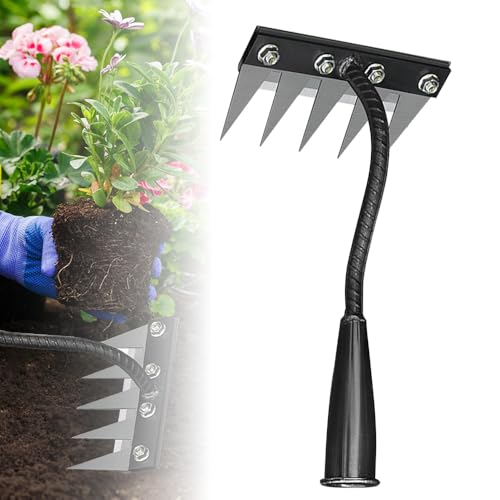Imagine stepping into your backyard and picking fresh, juicy peaches straight from your own tree. Growing peaches isn’t just a dream—it’s an achievable goal that can transform your homestead or small farm into a productive orchard. Whether you’re a hobby gardener or an aspiring commercial grower, peach cultivation offers both personal satisfaction and excellent profit potential.
In this comprehensive guide, we’ll walk you through everything you need to know about how to plant peaches, from selecting the right variety to harvesting your first crop. Even if you’re completely new to fruit tree cultivation, you’ll discover that growing peaches is more straightforward than you might think.
What Are Peaches and Why Should You Grow Them?
The peach (Prunus persica) is a stone fruit prized for its soft, sweet flesh and aromatic flavor. Rich in vitamins A and C, along with essential minerals like potassium, peaches offer impressive nutritional benefits. These versatile fruits can be enjoyed fresh, canned, baked into desserts, or processed into jams and preserves.
Economic Benefits: Peach cultivation represents a lucrative opportunity, especially in regions with suitable climates. According to USDA data, the United States produces over 650,000 tons of peaches annually, with California, South Carolina, and Georgia leading production. Small-scale growers can expect returns of $8,000-$15,000 per acre once trees reach full production.
Quick Returns: Unlike many fruit trees that take years to bear fruit, peach trees are fast producers. With proper care, your trees can begin producing fruit in their second or third year, reaching full production by year four or five.
How to Plant Peaches: Step-by-Step Growing Guide
1. Choosing the Right Peach Variety
Selecting the appropriate peach variety for your climate zone is crucial for success. Peaches require a specific number of “chill hours” (temperatures between 32°F and 45°F) during winter dormancy to produce fruit properly. Here are the top varieties for American growers:
Elberta
The Classic American Peach
- Climate: Thrives in USDA Zones 5-9, requiring 800-900 chill hours
- Harvest Time: Late July to early August
- Fruit Characteristics: Large, freestone peach with golden-yellow flesh. Firm texture with excellent sweet flavor
- Advantages:
- Outstanding for fresh eating, canning, and freezing
- Self-pollinating
- Excellent shelf life and transport durability
- Time-tested variety with reliable production
Redhaven
Early Season Favorite
- Climate: USDA Zones 5-8, needs 800-950 chill hours
- Harvest Time: Mid-July
- Fruit Characteristics: Medium to large freestone peach with bright red skin over yellow background. Yellow flesh with exceptional sweetness
- Advantages:
- Early harvest extends your selling season
- Highly disease-resistant
- Consistent heavy producer
- Excellent fresh market variety
Contender
Best for Cold Climates
- Climate: USDA Zones 4-8, tolerates 1,000-1,050 chill hours
- Harvest Time: Early to mid-August
- Fruit Characteristics: Medium-sized freestone with bright yellow flesh
- Advantages:
- Superior cold hardiness—survives temperatures to -20°F
- Late blooming reduces frost damage risk
- Reliable production in challenging northern climates
- Self-fertile
Florida Prince
Low-Chill Variety for Warmer Regions
- Climate: USDA Zones 8-10, requires only 150 chill hours
- Harvest Time: May to early June
- Fruit Characteristics: Semi-freestone with yellow flesh and attractive red blush
- Advantages:
- Ideal for Florida, Southern California, Texas, and Gulf Coast regions
- Very early harvest captures premium prices
- Excellent fresh eating quality
- Thrives where traditional peaches fail
2. Understanding Ideal Climate and Soil Conditions
Climate Requirements:
- Temperature Range: Peaches perform best with summer temperatures between 75°F and 85°F
- Chill Hours: Most varieties need 600-900 hours between 32°F-45°F during winter
- Growing Season: Requires 150-200 frost-free days
- Sunlight: Full sun exposure (minimum 6-8 hours daily)
Soil Requirements:
- Drainage: Well-drained sandy loam is ideal. Peaches cannot tolerate waterlogged conditions
- pH Level: 6.0-6.5 (slightly acidic)
- Depth: Minimum 3 feet of workable soil for proper root development
- Fertility: Moderate fertility with good organic matter content
Critical Caution: Avoid planting in low-lying areas prone to late spring frosts, which can devastate blossoms and eliminate your crop for the season.

3. Preparing Your Planting Site
Proper soil preparation sets the foundation for decades of productive growth.
Soil Testing: Begin by testing your soil through your local Extension office or with a home test kit. You’ll need to know pH, nitrogen, phosphorus, potassium levels, and organic matter content.
pH Adjustment: If pH is below 6.0, incorporate dolomitic limestone at rates recommended by your soil test (typically 50-75 pounds per 1,000 square feet). Apply lime 2-3 months before planting.
Organic Matter Enhancement: Mix 3-4 inches of well-aged compost or composted manure into the top 12 inches of soil. This improves drainage in clay soils and water retention in sandy soils.
Planting Hole Specifications:
- Dimensions: Dig holes 2-3 feet wide and 18-24 inches deep
- Spacing: Plant trees 15-20 feet apart (standard size) or 10-12 feet (dwarf varieties)
- Row Spacing: Maintain 20-25 feet between rows for equipment access
4. Planting Your Peach Trees
Best Planting Time: Plant bare-root trees during dormancy (late winter to early spring) or container-grown trees in spring after the last frost date.
Step-by-Step Planting Process:
- Soak bare-root trees in water for 2-4 hours before planting
- Create a planting mound in the center of the hole
- Spread roots naturally over the mound, removing any damaged or circling roots
- Position correctly: The graft union should sit 2-3 inches above soil level
- Backfill carefully with native soil mixed 50/50 with compost
- Water thoroughly to settle soil and eliminate air pockets
- Apply mulch: Spread 3-4 inches of organic mulch in a 3-foot circle, keeping it 6 inches away from the trunk
- Install support stake if planting in windy areas
Critical Mistake to Avoid: Never plant deeper than the nursery soil line. Deep planting leads to root rot and tree decline.
5. Essential Care for Growing Peach Trees
Watering Strategy
First Year: Water deeply once weekly, providing 1-2 inches of water. Increase frequency during hot, dry periods.
Established Trees: Once established, peach trees are moderately drought-tolerant but perform best with consistent moisture. Provide 1 inch of water weekly during growing season, increasing to 1.5-2 inches during fruit development.
Irrigation Method: Drip irrigation or soaker hoses deliver water efficiently while keeping foliage dry, reducing disease pressure.
Fertilization Schedule
Year One: Apply 1/4 pound of 10-10-10 fertilizer six weeks after planting, then again in early summer.
Years Two-Three: Increase to 1/2 pound per year of age (1 pound in year two, 1.5 pounds in year three), split into early spring and early summer applications.
Mature Trees (4+ years): Apply 5-8 pounds of 10-10-10 annually in early spring before bud break. Alternatively, use aged compost or a balanced organic fertilizer.
Monitoring: Watch for excessive vegetative growth (more than 18 inches per year), which indicates over-fertilization and increases disease susceptibility.
Pruning Requirements
Proper pruning is essential for productive, healthy peach trees.
First Year (Formative Pruning):
- Prune at planting to 24-30 inches height
- Select 3-4 well-spaced scaffold branches
- Create an open center (vase shape) for maximum sun penetration
Annual Maintenance Pruning (Late Winter):
- Remove dead, diseased, or crossing branches
- Thin crowded growth to allow air circulation
- Head back vigorous shoots to promote fruiting wood
- Maintain tree height at 8-10 feet for easy harvest
Summer Pruning:
- Remove water sprouts and suckers as they appear
- Thin fruit when marble-sized (6-8 inches apart) for larger, higher-quality peaches
Pest and Disease Management
Common Pests:
- Peach Tree Borer: Apply preventive trunk sprays or pheromone traps
- Plum Curculio: Use insecticide applications at petal fall and shuck split
- Aphids: Control with insecticidal soap or beneficial insects
- Oriental Fruit Moth: Monitor with pheromone traps; apply targeted sprays
Common Diseases:
- Brown Rot: Fungal disease affecting blossoms and fruit. Apply fungicides during bloom and pre-harvest
- Peach Leaf Curl: Treat with copper-based fungicide during dormancy (fall and early spring)
- Bacterial Spot: Choose resistant varieties; apply copper sprays preventively
- Powdery Mildew: Ensure good air circulation through proper pruning
Integrated Pest Management (IPM): Combine cultural practices (sanitation, resistant varieties), biological controls, and targeted chemical applications only when necessary.

Advanced Tips for Maximizing Peach Production
Fruit Thinning for Quality
When peaches reach marble size (4-6 weeks after bloom), thin fruit to 6-8 inches apart. This critical step:
- Increases fruit size by 30-50%
- Improves sugar content and flavor
- Reduces branch breakage from excessive weight
- Prevents biennial bearing (alternating heavy and light crop years)
Pollination Considerations
Most peach varieties are self-fertile and don’t require cross-pollination. However, planting multiple varieties can:
- Extend your harvest season over 6-8 weeks
- Provide genetic diversity
- Slightly increase overall yields through improved pollination
Winter Protection
In marginal growing zones:
- Apply thick mulch layer (6-8 inches) around root zone before winter
- Whitewash trunks to prevent winter sun scald
- Consider windbreaks to reduce winter desiccation
- Choose late-blooming varieties to avoid late frost damage
Harvesting Your Peaches
Determining Ripeness:
- Background color changes from green to yellow/cream
- Fruit yields slightly to gentle pressure
- Easy separation from branch with gentle twist
- Sweet aroma develops
Harvest Timing: Most varieties ripen over 2-3 weeks. Check trees every 2-3 days during peak season.
Handling: Handle gently to avoid bruising. Peaches bruise easily and damaged fruit doesn’t store well.
Storage:
- Room Temperature: 2-3 days for finishing ripening
- Refrigeration: 5-7 days at 32-35°F
- Freezing: Slice and freeze for up to 12 months
Expected Yields:
- Years 2-3: 25-50 pounds per tree
- Years 4-5: 75-100 pounds per tree
- Mature Trees (6+ years): 150-300 pounds per tree depending on variety and management
Fascinating Facts About Peach Cultivation
- Winter Dormancy: Peaches require winter dormancy to break bud rest and trigger spring growth. Without adequate chill hours, trees produce poor blossoms and minimal fruit.
- Lifespan: Well-maintained peach trees remain productive for 15-20 years, though commercial orchards often replace them after 12-15 years.
- Rapid Growth: Peach trees grow faster than most fruit trees, often reaching 8-12 feet in just three years.
- Historical Significance: While peaches originated in China, they’ve been cultivated in America since the 1600s and remain an iconic Southern crop.
Related Resources
Recommended Reading:
- Complete Guide to Growing Plums on Your Property
- Understanding Chill Hours for Fruit Trees
- Integrated Pest Management for Stone Fruits
Professional Organizations:
- National Peach Council
- Your State Cooperative Extension Service
- American Pomological Society
Conclusion: Start Your Peach Growing Journey Today
Growing peaches successfully combines proper variety selection, attentive care, and patience. Whether you’re planting a single tree for fresh family fruit or establishing a small commercial orchard, peaches offer exceptional rewards. With proper planning and the techniques outlined in this guide, you’ll be harvesting basket after basket of delicious, sun-ripened peaches within just a few seasons.
The investment you make today—in quality trees, soil preparation, and knowledge—will pay dividends for years to come. Don’t let another growing season pass without starting your peach orchard.
Ready to get started? Visit your local nursery this week to select varieties suited to your climate zone. Your future harvest is just a planting away!



